What Is Transported Soil?
Important Point
Soil is formed through the process of weathering of the rocks, and it’s essential to understand how are soils transported. Soil is a natural resource which is present on our earth. Weathering of the soil is the physical breakdown and chemical alteration of the earth materials at the surface level. In the process of weathering the rocks get breakdown into the smaller particles when they come in contact with the air-water or any other agent.
It is very important for Civil Engineers to study the different types of soil and their mode of transportation from one place to another place. Because Civil engineer has to deal with Foundation Engineering while constructing the structures.
In this article, you will get to know all about the residual and transported soil and the Difference between the Residual soil and transported soil.
Also, Read: 10 Best Cement Companies In India
On the basis of the method of forming the soil get classified into the following types
- Residual soil
- Transported soil
Transported Soil Definition
Transported soils are those materials that have been moved from their place of origin, by gravity, wind, water, glaciers, or human activity either singularly or in combination.
The method of transportation and deposition has a great effect on the properties of the resulting soil mass.
or
Transported soil is a type of soil which is formed by the deposition of the weathered soil which is transported from one place to another place with the help of natural agents like water, wind and glaciers
Transported soil is formed at one place but transported and deposited at another place. Transported soil is developed by weathering of the sediment.
Classification of Transported Soil
The transported Soil is classified depending on the mode of transportation of the soil which is listed are as follows
- Water transported soil
- Wind transported soil
- Glacial deposits
- Gravity Deposits
Also, Read: Density of Cement Sand and Aggregate | Cement Density | Sand Density | Aggregate Density | list of Density
1. Water Transported Soil
- The water formed transported soil is transported by the flowing water through the river, valleys, and streams.
- Soil may be transported in the form of suspended particles through stream and rivers.
- When the velocity of the flowing water is more, then the large size of particles move from one place to another.
- The soil which is Transported and deposited by the rivers are known as alluvial soil. The soil which is transported by the lake is known as Lacustrine soil.
2. Wind Transported soil
- The soil particles which is transported with the help of wind from one place to another is known as wind transported soil.
- In arid regions, fine-grained soils such as silt and clay are Transported by the wind.
- In the desert regions, there is the formation of dunes due to deposition of soil like coarse sand.
3. Glacial Deposits
- Glacial deposits from a very large group of Transported soil. Due to the melting of the glacier which causes deposition of all materials.
- The Glacial soil has good shear strength and it can be compacted as required density. The Glaciers are the huge mass of ice which moves towards land due to melting.
- This glaciers also Transported soil with them from one place to another place due to the melting of ice.
- This type of soil which is transported by the Glaciers is known as Glacial soil.
4. Gravity Deposits
- The soil, including types like talus is the soil transported by, can also be transported by means of gravity. Gravity can transport the soil only at a short distance.
- The soil which is Transported with the help of gravity is known as Talus. This includes the deposits by the landslides.
- It is also known as Colluvial soil which is deposited by the gravitational force. It generally consists of the coarse grained particles.
- The Soil transported by the gravity contains different size and shape of grain particles. The movement in the case of gravity Deposits soil is less due to no external forces to move soil at a long distance.
Also, Read: What Is Unit Weight | What Is Density | What Is Unit Weight Material | Unit Weight Building Materials
What Is Residual Soil?
When we define residual soil, it is the material resulting from the in situ weathering of the parent rock. Residual soils are distributed throughout many regions of the world, such as Africa, South Asia, Australia, Southeastern North America, Central and South America, and considerable regions of Europe
How Is Transported Soil Is Different from Residual Soil?
The characteristics of the residual soil depend on the type of parent rock. Residual soil stays at its parent rock whereas the transported soil moved away from its parent rock.
Residual soil has better engineering properties as compared to the transported soil. The soil which is deposited in its original parent rock is known as the residual soil.
Also, Read: What Is Cover in Concrete | Clear Cover in Beams, Slab, Column, Footing
Residual Soil and Transported Soil
- Soil is formed by the weathering action and get transported from one place to another by the various transportation agencies by wind, water, glacier and gravity. This soil gets deposited at one place and known as transported soil.
- Residual soil mostly found at the location where it formed. Generally, the residual soil depth varies from 5 m to 20 m. residual soils comprise of the wide range of the particles, shapes and composition.
- Residual soil is the weathering product of the rocks which are found under unsaturated conditions.
- The residual soil is formed from the weathering action of the Bedrock present below. The texture and the composition of the residual soil reflect in their parent rock.
- The ‘transported soil’ the name itself suggests it’s meaning that it is a soil which is transported from one place to another place.
- The method of transportation and deposition of the transported soil greatly affects its properties. Wind transported soil also formed Dunes. The sand which is deposited by the wind in the desert on the beach areas known as dunes.
Also, Read: Difference Between Short Column and Long Column | What Is Column | Types of Column
What Is the Difference Between Residual Soil and Transported Soil?

| Sr.No. | Residual Soil | Transported soil |
| 1 | Residual soil is a type of soil which remains at the location of its formation. | Transported soil is a soil which moves from one place to another place |
| 2 | Residual soil does not move away from its parent rock. | Transported soil move away from its parent rock. |
| 3 | Residual soil contains different types of grain particles. | In the Transported soil weak grain particles are get omitted. |
| 4 | Mineral composition in the residual soil will remain the same. | The soil mineral composition will vary in the Transported soil. |
| 5 | The parent material is the original rock in the residual soil. | Different parent material has been mixed in the Transported soil. |
Transported Soil
Transported soil is weathered soil deposits that are transported from one place to another by natural agents like wind, water, and glaciers. Based on the means of transportation, there are wind-transported soils, water-deposited soil, and glacier-deposited soils.
Residual Soil
Considering the residual soil definition, it is the material resulting from the in situ weathering of the parent rock. Residual soils are distributed throughout many regions of the world, such as Africa, South Asia, Australia, Southeastern North America, Central and South America, and considerable regions of Europe.
What Is Residual Soil?
Residual soil is soil formed from the weathering of the bedrock below. The texture and composition of residual soil reflects the parent rock.
What Is Transported Soil?
Transported soils are those materials that have been moved from their place of origin, by gravity, wind, water, glaciers, or human activity – either singularly or in combination. The method of transportation and deposition has great effect on the properties of the resulting soil mass.
Residual and Transported Soil
Residual soils are formed from the weathering of rocks and practically remain at the location of origin with little or no movement of individual soil particles. Transported soils are those that have formed at one location (like residual soils) but are transported and deposited at another location.
What Is the Difference Between Residual and Transported Soils?
Transported soil is blown or washed away from its parent rock. Soil that remains at the place of formation is called residual soil. The weathered pieces of rocks that have been carried by several agents like wind and water and finally breaks down into further small pieces to settle down is called transported soil.
Like this post? Share it with your friends!
Suggested Read –
- Coarse Soil
- Build Up Area Definition
- Difference Between CPM and PERT | What Is CPM & PERT
- Top 10 Companies for Environmental Engineers to Work For
- Difference Between One Way Slab and Two Way Slab | What is Slab
- What Are Planted Column, Floating Column, Hanging Column, and Stub Column
- Meaning | What Is Waterlogging | How to Prevent Waterlogging | Effect of Waterlogging
- What Is Mix Design of Concrete | Nominal Mix | Design Mix| Difference Between Nominal Mix
- What Is Reinforced Brick Masonry | Construction of the Reinforced Brick wall | What Is Reinforced Brick
Originally posted 2023-08-15 18:02:00.
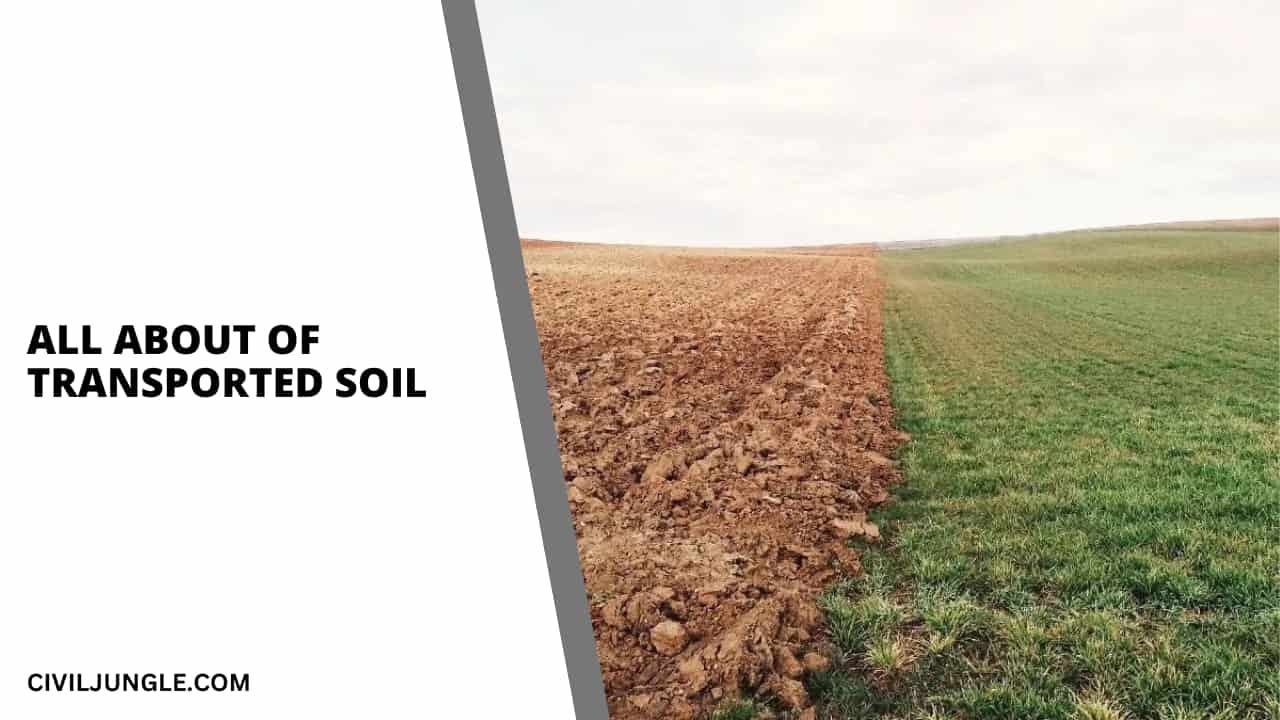

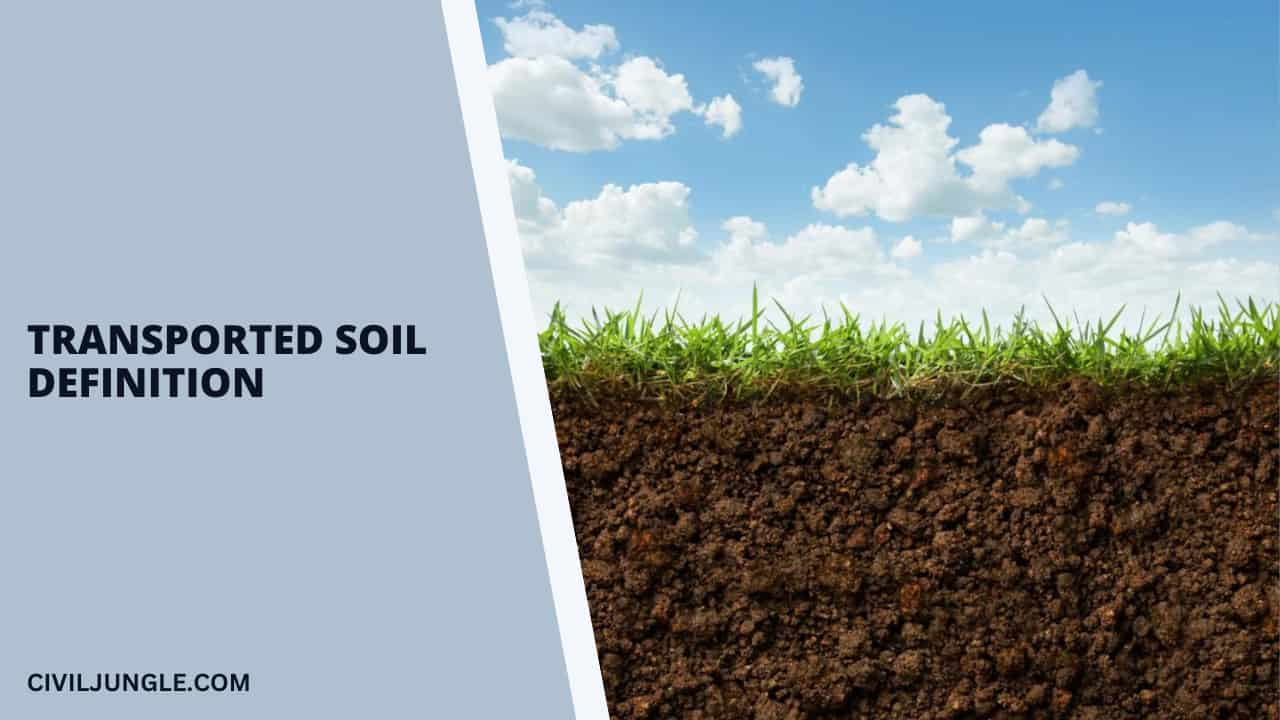
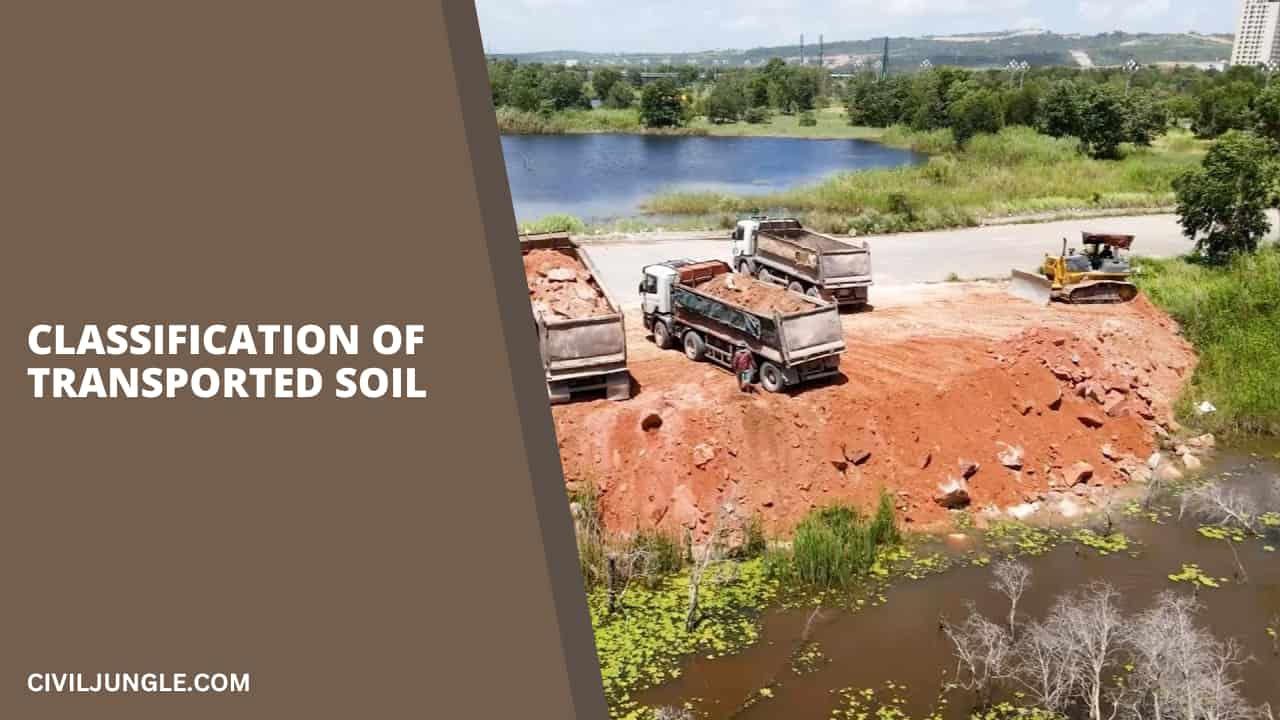
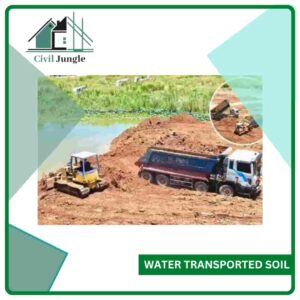
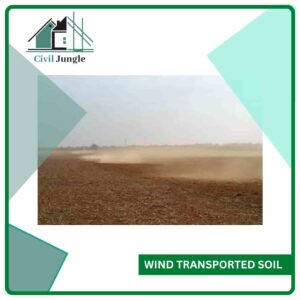
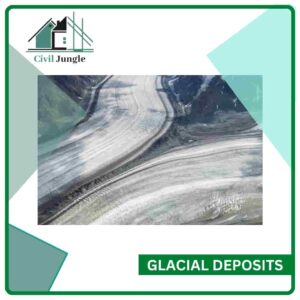

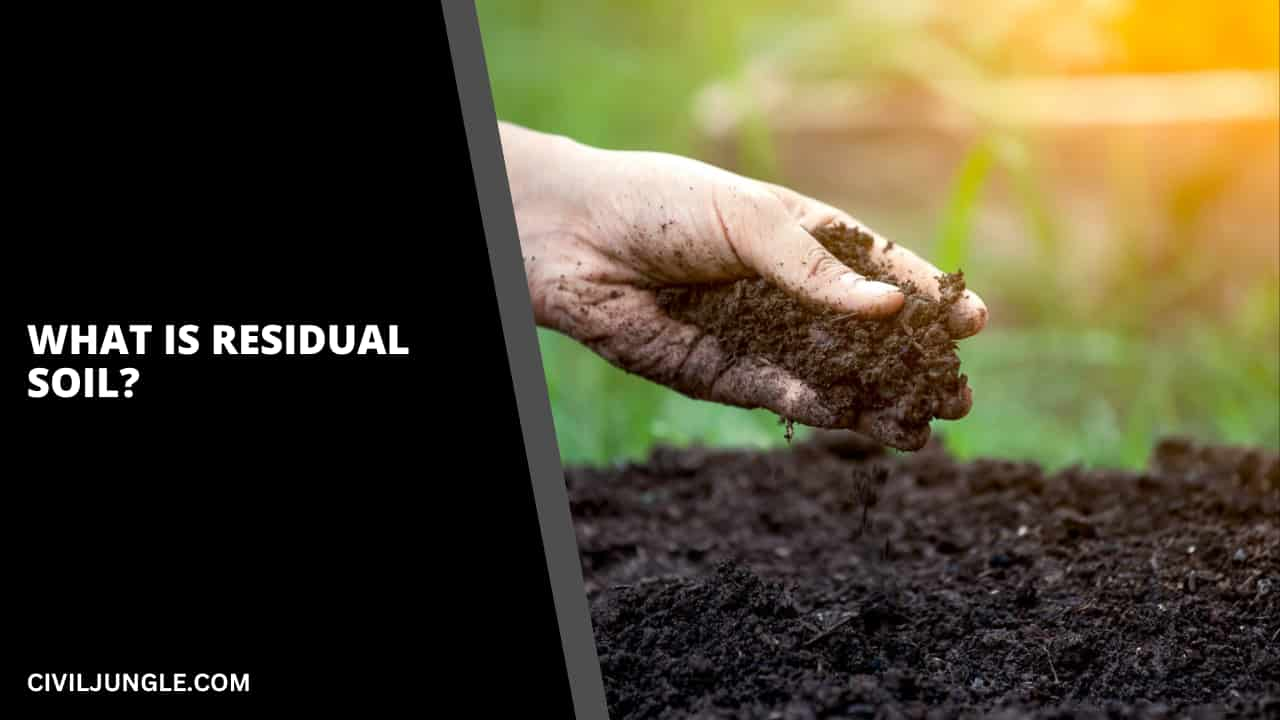
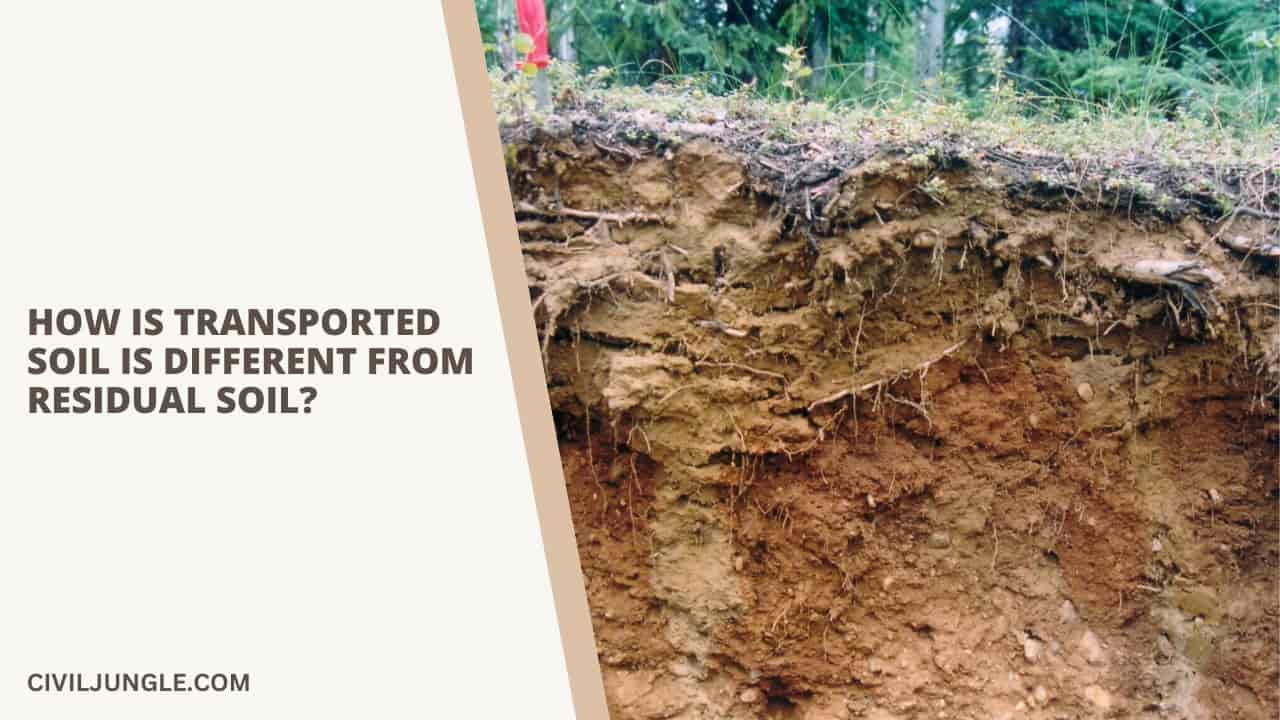
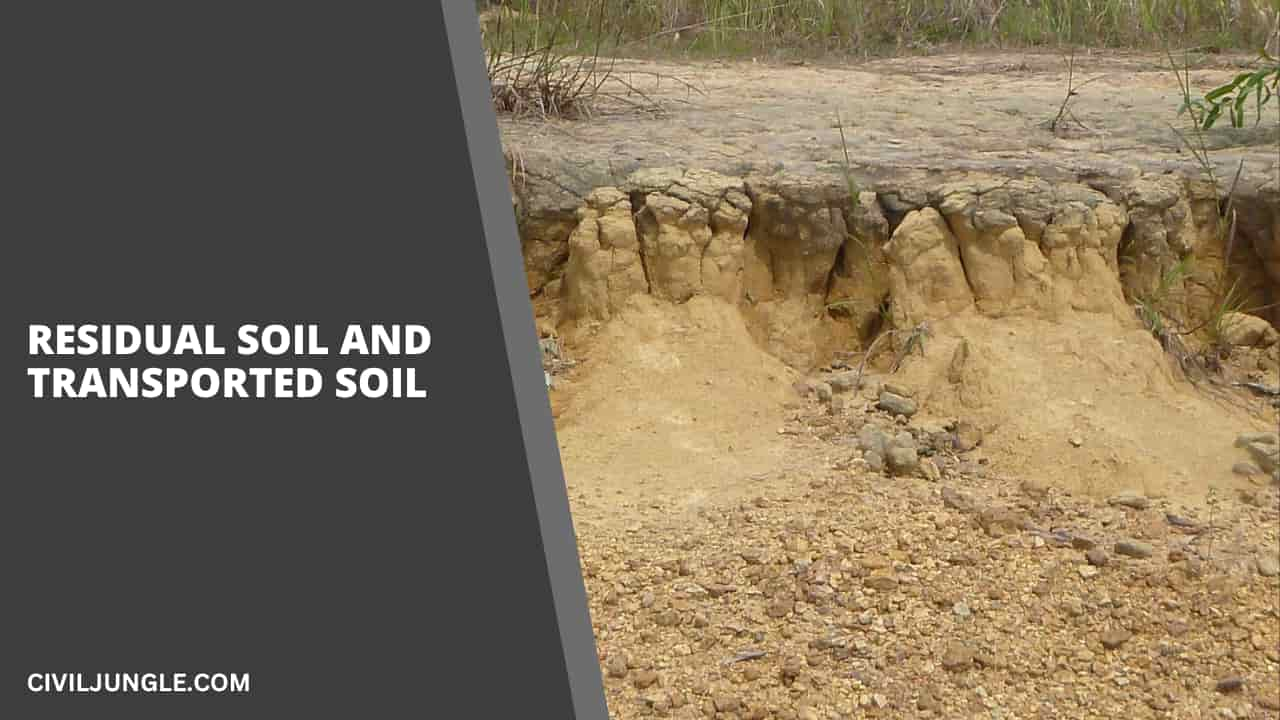

Leave a Reply